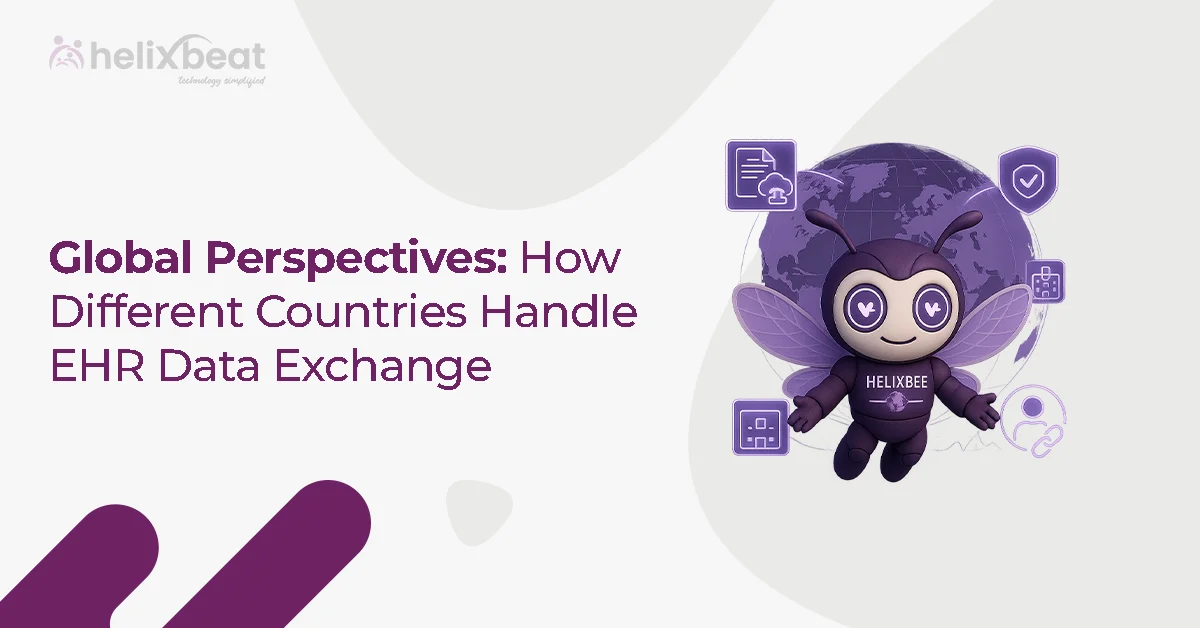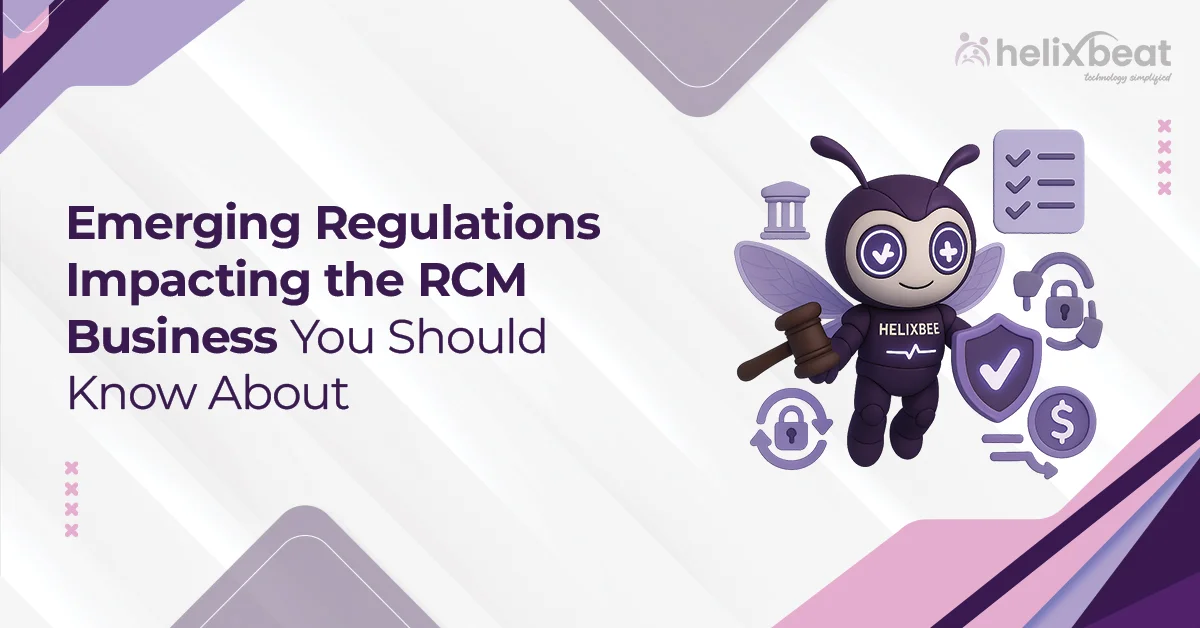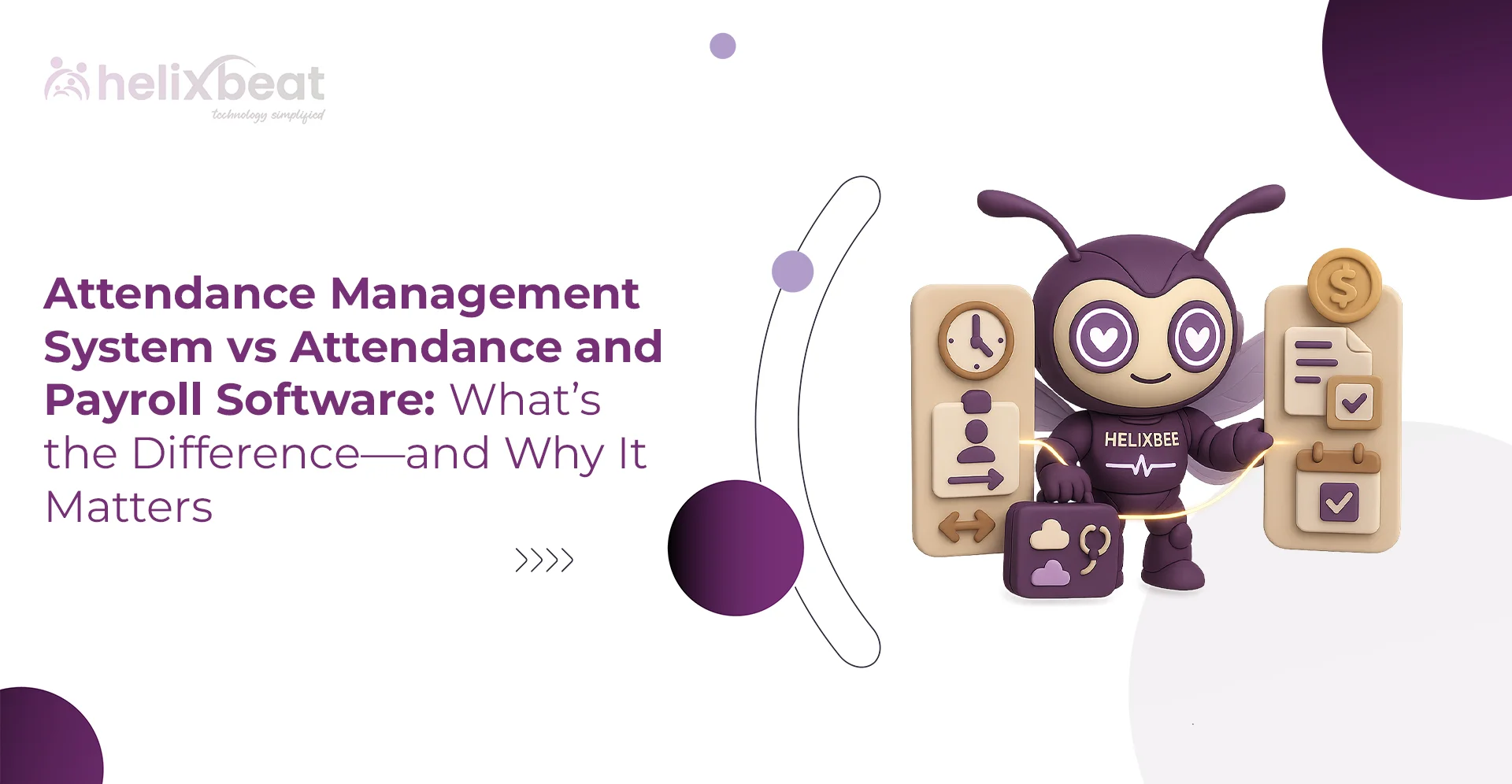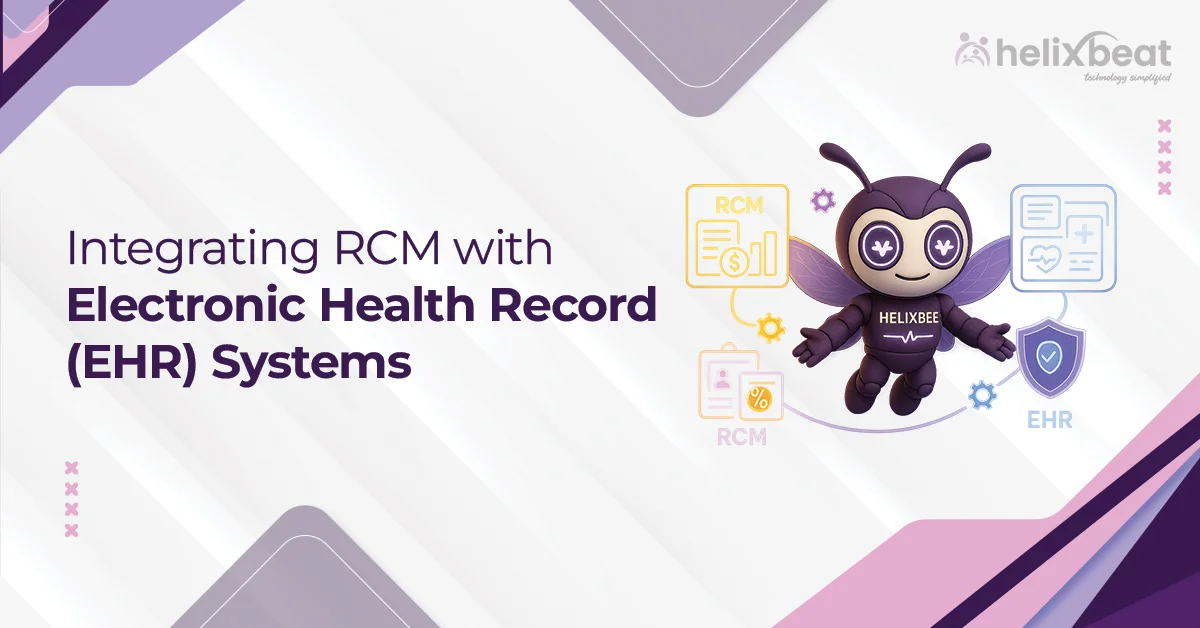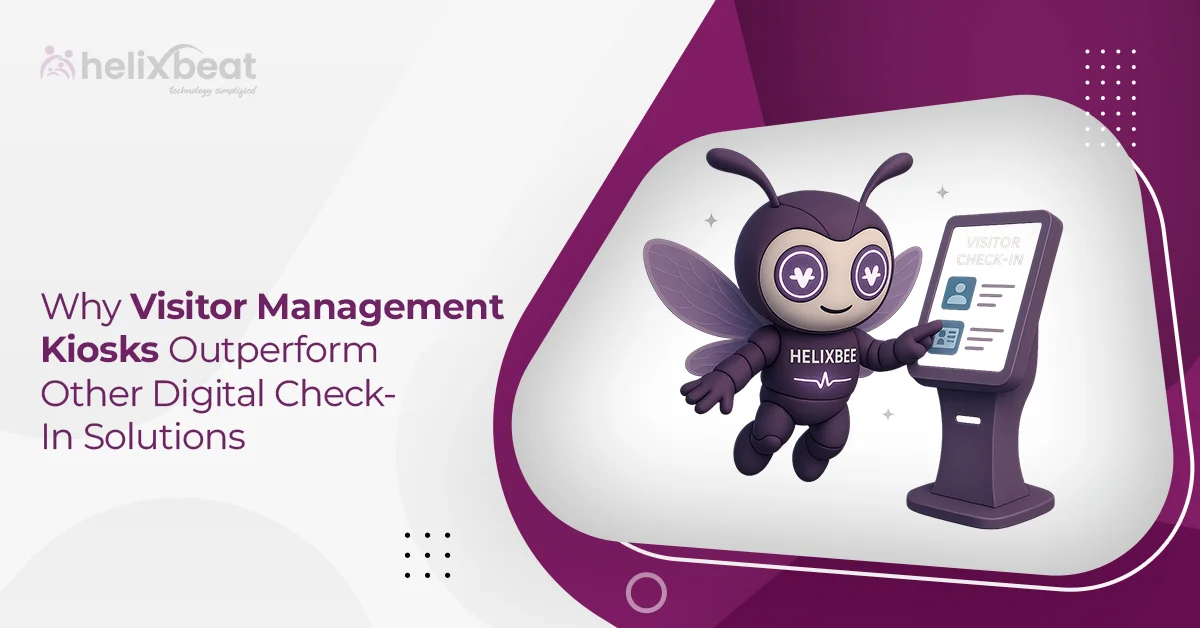Imagine you created a cutting-edge app that helps small businesses track their inventory in real-time. Your app is growing fast, gaining users daily, and everything seems on track. But one evening, you get an alert—your server is down, causing the app to freeze for hours. In a matter of minutes, your users start complaining, and your reputation takes a hit.
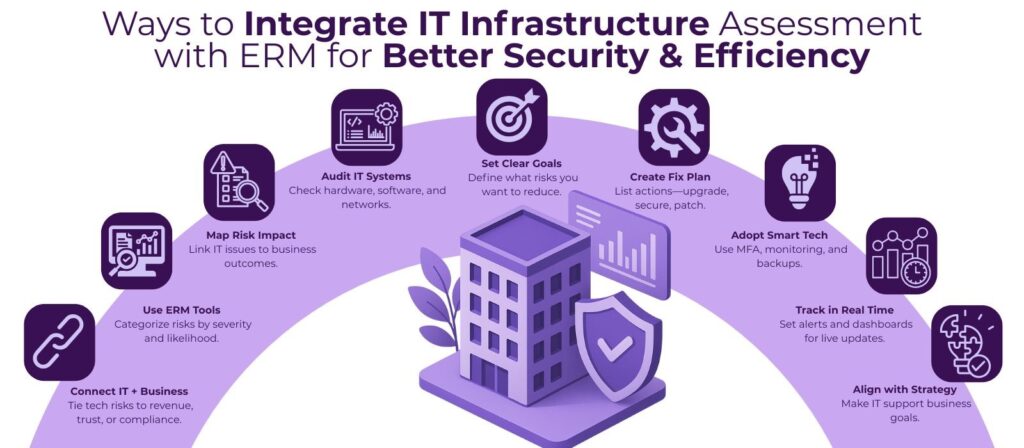
Now, what if there was a way to avoid this nightmare? This is where IT infrastructure assessments come in. Think of it as taking your IT systems to the doctor for a check-up. And when you integrate these assessments with Enterprise Risk Management (ERM), you’re not just identifying risks but actively addressing them.
In this blog, we’ll discuss how combining IT infrastructure assessments with ERM can help businesses, like yours, avoid those costly disruptions, enhance security, and create a more efficient IT environment.
Table of Contents
What is IT Infrastructure Assessment?
An IT infrastructure assessment scrutinizes an organization’s technology environment, including hardware, software, network systems, and data management processes. IT experts evaluate key aspects like system reliability, scalability, compliance with regulations, and the overall health of your IT infrastructure.
Why Combine IT Infrastructure Assessment with ERM?
Integrating IT infrastructure assessments with ERM can give organizations a clearer view of their profile. Here’s how:
1. Holistic Risk Identification
IT infrastructure assessment and ERM are the perfect team to uncover organisational risks. Think of it as getting a full-body check-up for your business.
Imagine a company, let’s call it “TechWorks,” conducting an IT assessment and discovering that its outdated software could open the door to hackers. However, when they link this finding with their ERM process, they realize the bigger picture—the outdated software might not only expose them to security breaches but also fail to meet regulatory standards.
Therefore, by combining IT infrastructure insights with ERM, businesses like TechWorks can get a comprehensive view of potential risks that may have gone unnoticed.
2. Enhanced Decision-Making
Integrating IT strategy consulting with ERM empowers decision-makers to make informed technology investments. By considering both the technical and business aspects of risks, leaders can find a balance between security and cost-efficiency.
For example, an in-depth IT infrastructure assessment might reveal costly inefficiencies. However, by taking ERM factors, like the risk of system downtime or data breaches, into account, companies can choose to invest in more reliable IT systems that provide lasting value.
Steps to Integrate IT Infrastructure Assessment with ERM
1. Set Clear Risk Management Goals
The first step is to set clear risk management goals for your organization. What specific outcomes do you want to achieve through stronger risk management? These goals will shape your IT infrastructure assessment and help you focus on key areas.
For example, a financial institution might prioritize safeguarding sensitive customer data, while a manufacturing company may want to evaluate the strength of its IT systems. Aligning your IT assessment with these goals helps pinpoint critical vulnerabilities.
2. Conduct a Comprehensive IT Infrastructure Assessment
Once the objectives are set, the next step is to perform a thorough IT infrastructure assessment. This involves assessing various components of your IT environment, such as:
- Network Security: Analyzing firewall configurations, network segmentation, and access controls.
- Hardware and Software: Assessing the age and performance of servers, workstations, and applications.
- Data Management: Evaluating data storage, backup processes, and access controls.
- Compliance: Verifying that the IT systems meet industry-specific regulations.
IT assessment services can help identify both strengths and weaknesses in the infrastructure.
3. Identify Risks and Impacts
With a clear understanding of the IT infrastructure, the next step is to identify risks using the ERM framework. This process involves assessing the potential impact of each identified vulnerability. For example:
- A network security breach could lead to the loss of sensitive customer data and cause reputational damage or regulatory fines.
- An outdated hardware system may affect production schedules and financial performance.
By quantifying the risks in terms of their likelihood and potential impact, businesses can prioritize them based on objectives.
4. Develop a Risk Mitigation Plan
After identifying and assessing the risks, the next step is to develop a mitigation plan. This plan should outline the specific actions to address the identified vulnerabilities, such as:
- Upgrading hardware and software to improve performance and reduce security risks.
- Implementing stronger network security measures like multi-factor authentication or intrusion detection systems.
- Regularly updating and patching systems to protect against vulnerabilities.
5. Implement and Monitor the Plan
Once the mitigation plan is complete, it’s time to implement the solutions. This may involve upgrading systems, reconfiguring networks, or improving data protection protocols. After implementation, continuous monitoring is necessary to keep the IT systems secure and efficient.
Why Choose Helixbeat for IT Infrastructure Assessment
At Helixbeat, we specialize in delivering comprehensive IT infrastructure assessments that provide a clear view of your technology environment. Our approach goes beyond simply identifying weaknesses; we focus on creating a tailored strategy to improve the security, efficiency, and scalability of your IT systems. With our expert team, you gain:
- Customized Solutions: Our IT infrastructure assessment helps us identify the specific areas that require attention and improvement.
- Advanced Technology Insights: Leveraging the latest tools and methodologies, we provide in-depth analysis and actionable insights to optimize your IT environment for better performance and security.
- Risk Mitigation: Our assessments help you identify potential risks and vulnerabilities, so you can implement proactive measures to safeguard your systems and data.
- Regulatory Compliance: We help you stay compliant with industry standards and regulations by identifying areas where your IT infrastructure may need updates or improvements.
- Ongoing Support: Helixbeat doesn’t just provide an assessment and walk away. We offer continuous support to help you implement the recommended changes, monitor progress, and adapt to new challenges.
By choosing Helixbeat for your IT infrastructure assessment, you’re partnering with a team of experts committed to optimizing your technology environment while safeguarding your business against potential risks.
Final Thoughts
Integrating IT infrastructure assessments with Enterprise Risk Management (ERM) offers organizations a holistic approach to managing technology risks while improving security, efficiency, and overall business performance.
Contact us today to get started on strengthening your IT infrastructure and driving business success.
FAQs
1. Why should I integrate IT infrastructure assessment with ERM?
Integrating an IT assessment with Enterprise Risk Management (ERM) allows businesses to get a comprehensive view of both technical vulnerabilities and the broader business impacts, which leads to better decision-making and risk mitigation strategies.
2. What are the main benefits of combining IT infrastructure assessments with ERM?
This integration helps organizations identify risks more effectively, prioritize security investments, improve operational efficiency, and enhance overall security, all while aligning with business objectives.
3. What should be the focus during an IT infrastructure assessment?
The assessment should focus on key areas such as network security, hardware and software performance, data management, and compliance with regulatory requirements. These areas directly impact both security and business performance.
4. What are the steps involved in integrating IT infrastructure assessment with ERM?
The process involves setting clear risk management goals, conducting a thorough IT assessment, identifying risks, developing a mitigation plan, and implementing and monitoring the plan to improve security and efficiency.
5. Why choose Helixbeat for IT infrastructure assessments?
Helixbeat specializes in comprehensive IT infrastructure assessments tailored to your business needs. With expert insights, risk mitigation strategies, and continuous support, we help optimize your IT environment, safeguard your business, and improve overall performance.






